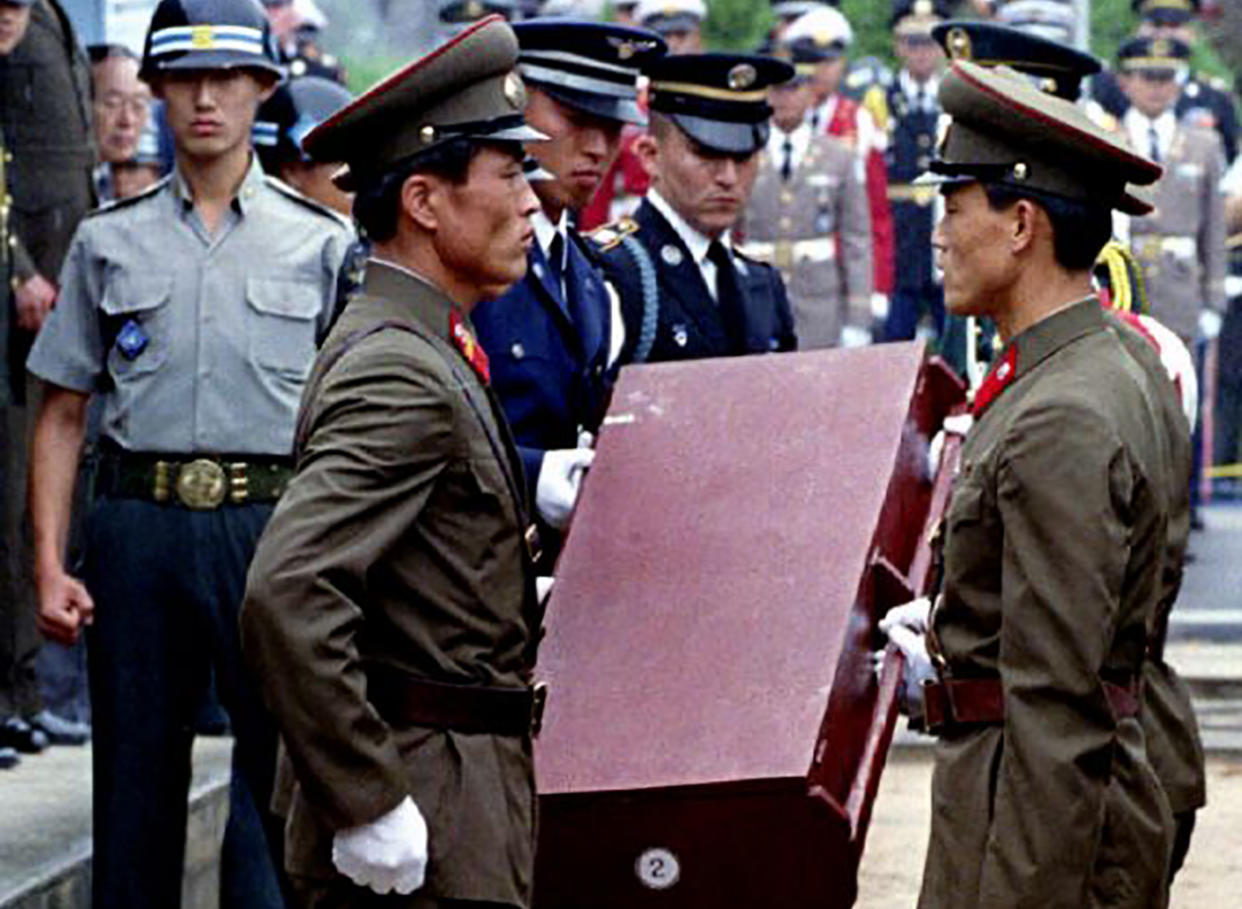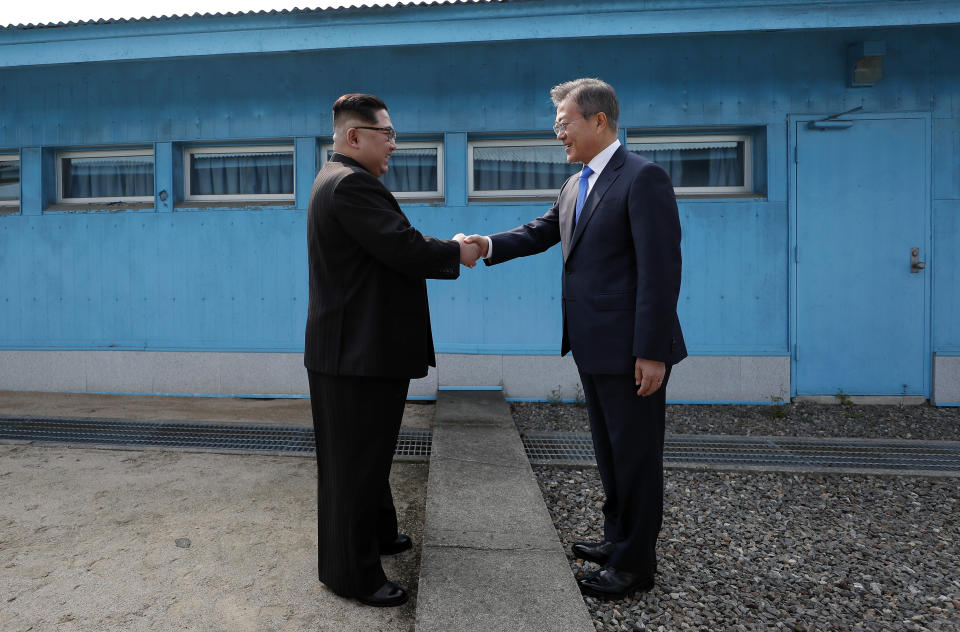The long and uncertain road to peace after the Korean War

It has often been called “The Forgotten War” in the US. In the past few months, The Korean War has unexpectedly become the subject of global attention amid the flurry of summits and diplomatic activities involving several of the belligerents.
On 25 June 1950, North Korea unleashed a surprise invasion of the South to trigger the War. Sixty-eight years on, Korean affairs experts told Yahoo News Singapore that the proposed end of the conflict would boost prospects for peace on the divided Korean peninsula but the path towards the goal is strewn with geopolitical landmines.
They said the signing of a peace treaty to end the War might not have a significant impact on two key issues that have bedeviled relations between North Korea and its arch enemies, the US and South Korea: denuclearisation on the Korean peninsula and US military presence in South Korea.
While an end to the War was not on the agenda of the US-North Korea summit in Singapore on 12 June, it would be welcomed by the primary players in the conflict and other regional countries.
“If a peace treaty is signed, this would be the very last and only unresolved war from the Cold War that will end. It will also facilitate better relations between North and South Korea. This will allow North Korea to be re-integrated into the region,” said Dr Lim Tai Wei, Senior Lecturer at the Singapore University of Social Sciences.
After a prolonged and bloody stalemate during the War, the US-led United Nations command, Chinese and North Korean forces signed an armistice on 27 July 1953. The War caused the deaths of an estimated 1.2 million soldiers and 1.6 million civilians on all sides.
South Korea was not a signatory because then President Syngman Rhee refused to cease hostilities as he wanted to reunify the two Koreas under Seoul’s control, similar to the aim of North Korean dictator Kim Il Sung to rule the entire peninsula.
During the inter-Korean summits on 27 April and 26 May, North Korean leader Kim Jong Un – the third of the Kim dynasty – and South Korean President Moon Jae-in pledged to work towards concluding the War by the end of this year.

Who should be involved in the peace treaty?
But experts said before the goal can be attained, the framework involving the signatories of the peace treaty has to be finalised.
Dr Lim said the treaty might be based on a bilateral format between North Korea and the US, and separately between the two Koreas even though South Korea was not a signatory to the armistice.
A six-party format – the two Koreas, the US, China, Russia and Japan – could also take shape for the treaty, he added. These countries were involved in the six-party talks from 2003 to 2007 to resolve security concerns arising from North Korea’s nuclear weapons programme.
Shawn Ho, Associate Research Fellow at S. Rajaratnam School of International Studies, said the four main countries involved in the War – the two Koreas, the US and China, which sent the People’s Volunteer Army – would need to sign on the treaty. “Technically speaking, the document that was signed to hold a ceasefire is by three countries. But it is not practical to exclude the South Koreans because they are a key stakeholder in this whole issue,” he added.
The proposed denuclearisation on the Korean peninsula, Dr Lim and Ho agreed, is the core issue hampering the normalisation of ties between the antagonists and not the end of the War.
“Before the end of the War can take place, denuclearisation has to take place. At the very least, denuclearisation has to take place in tandem with the peace (treaty) negotiations,” said Dr Lim.
US President Donald Trump may have exuberantly declared “Korean War to end!” in a tweet after the inter-Korean summit in April but some members of his administration could use the treaty as a bargaining chip to compel North Korea to speed up its denuclearisation process.
“If once they say, ‘It’s the end of the war’, North Korea may take longer to denuclearise. If the North were to denuclearise quickly, the US can agree to end the war. So there are trade-offs,” Ho said.
US military presence and the DMZ
Even with the end of the War, the US is expected to maintain its estimated 30,000 servicemen in South Korea – a longstanding bugbear for the North.
Any withdrawal or reduction of US troops, Dr Lim said, would have great implications on the network of alliances between the superpower and its allies, as there are wider security concerns and geopolitical issues to consider.
Nevertheless, Trump has committed to provide security guarantees to North Korea during his summit with Kim, the experts pointed out. In the spirit of the agreement that both leaders signed in Singapore, US Secretary of Defense James Mattis announced last Friday (22 June) to “indefinitely suspend select (military) exercises” between US and South Korean forces amid ongoing negotiations with the North.
On the return of the war remains of US servicemen, it is “an issue of good faith” that will be carried out regardless of an end to the War, Dr Lim said.
The likely immediate outcome of a peace treaty is the dismantling of the Korean Demilitarised Zone (DMZ) – the ultimate symbol of the War.
During the first inter-Korean summit in Panmunjom this year, the two Koreas pledged to work towards easing military tension and eliminating the possibility of war by “completely ceasing all hostile acts against each other and transforming the DMZ into a peace zone”.
As the War has not ended, the DMZ still has to be in place to separate the two Koreas, Dr Lim said. But once a peace treaty is signed, the DMZ would outlive its function, he added.
Ho questioned, “Do you still need a DMZ where there are land mines separating the two Koreas? Do you need so many troops on each side of the DMZ to patrol and guard 24 hours a day? Technically, if you don’t have a war, why do you need such a heavy focus on the military and defence on both sides?”
Related stories:
COMMENT: Trump-Kim summit and the Singapore complex to impress the world
Inter-Korean summit: Fancy a tour of ‘the scariest place on Earth’?


